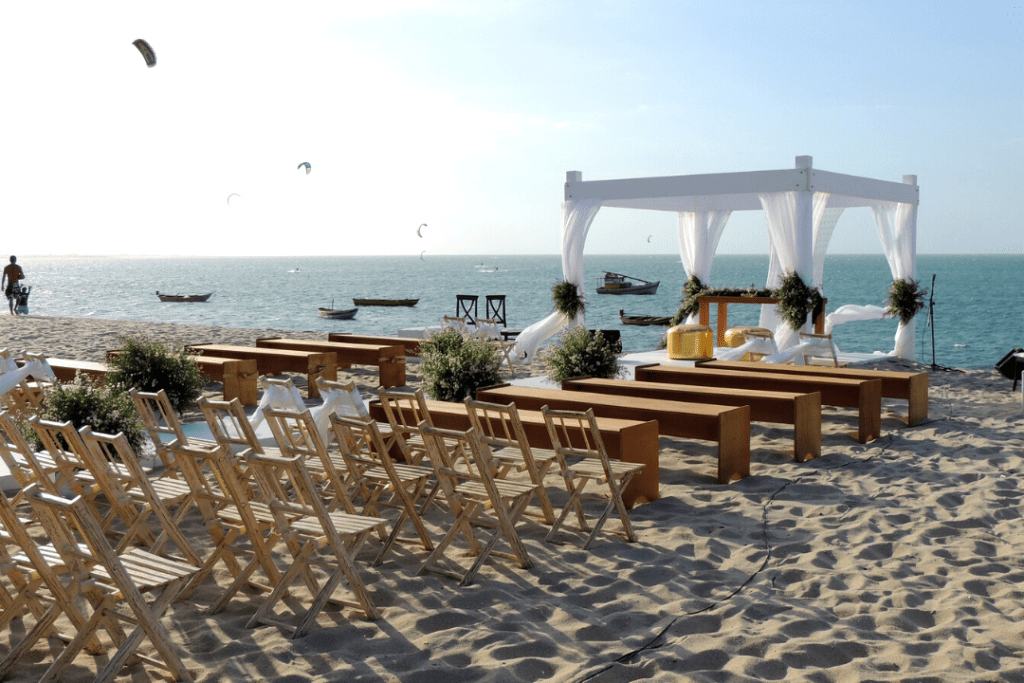

There’s the basics: open and closed-ended questions… then there’s more specific types of questions, each with their own purpose. Let’s take a look at the funnel approach, statements, rhetorical, narrative, explanatory and verification questions.
In my article Interviewing for biography: interrogation, conversation, and the in-between, I wrote about different approaches to biographical interviews. The approach you choose may influence the types of questions you choose to ask. In addition, what you choose to ask will be influenced by your objectives and the research you’ve conducted previously.
It’s important to prepare a list of questions that you might start with or refer to throughout the interview. Be prepared: oral historian Donald Ritchie says that “it is safer to have too many questions than too few… Some interviewees talk at great length in response to a single question… others answer briefly and need several follow-up questions to draw them out”.
Keep in mind that even with your list of carefully curated questions, you may not ask them all and you will likely ask new questions during the interview. In a narrative interview, a key part of knowing what to ask lies in listening effectively. We adjust or create our questions based on what has already been said. We probe or we pivot as we need to.
Ritchie discusses the importance of being flexible and curious, “an interviewer must always be prepared to abandon carefully prepared questions and follow the interviewee down unexpected paths, always helping the interviewee by questioning, guiding, coaxing, and challenging.”
The types of questions we ask influences the data that is gathered and how the interview progresses.
Later in this section, we’ll discuss the different types of questions, but first, let’s review open- ended, closed-ended and leading questions. In a narrative interview, the objective is to prompt the interviewee to do most of the talking. Open-ended questions are usually very effective at this, they give the interviewee the opportunity to ponder their thoughts and decide how long to speak about the topic.
Open-ended questions are questions which can’t be answered with a simple yes or no, or phrase. For example, an open-ended question is “tell me about your childhood”, and a more specific open-ended question is “can you tell me about the moment you realised you were adopted?”
Oral historian Charles Morrissey (cited by Ritchie) suggests framing an open-ended question by stating the problem, then asking the question, for example, “You were often seen volunteering in soup kitchens in the Bronx. How did these experiences influence your policy?” And then following this, specific questions can build upon this first answer.
The opposite of open-ended questions are closed-ended questions. Examples of closed-ended questions are “did you have a happy childhood?” and “you grew up in New York City, is that correct?” and “what date did you move to New York?” When an interviewer limits the answers, this too is a closed-ended question, for example, “did you prefer growing up in New York or LA?” Close-ended questions or very specific questions are useful when verifying information or if time is short.
Closely related to closed-ended questions is the “funnel approach” which Ritchie notes is often used in the courtroom or by political reporters. With this technique, interviewers start with broad questions, with each subsequent question becoming more specific, until the interviewee is easily able to answer “final, more specific questions”. Ritchie suggests this approach may be useful if the topic of conversation is controversial or if the interviewer is seeking specific information.
Ritchie notes that at times, it is possible to elicit a response without even asking a question, for example, restate what the person has said, make an observation or comment such as, “You grew up in South Carolina.”
Wang and Yan suggest avoiding rhetorical questions – these can be perceived as hostile and can be perceived as expressing a point of view, similarly to how negatives can express the interviewer’s perspective, words such as isn’t, don’t and shouldn’t.

It’s impossible for interviewers to remain neutral – even if you’re working from a strict list of questions, interviewees will infer messages from visual and verbal cues, even if the cue is the interviewer being impassive. Harding notes that in a narrative biographical interview, it is appropriate for the interviewer to offer thoughts, ideas and experiences, as it builds rapport with the interviewee, however Miller reminds us that when asking questions, be mindful of leading questions and making assumptions.
Leading questions can lead to inaccurate answers; Ritchie stresses that asking leading questions might lead to the interviewee assuming that that is what the interviewer wants to hear. An example of a leading question is, “you were overjoyed about having your wedding overlooking the beach, is that right?”.
When phrasing questions, be mindful of your assumptions and presuppositions. Wang and Yan define presuppositions as being background assumptions that make an expression make sense. For example, by asking “when did you go to the party”, you’re assuming the person actually went to the party, not just asking what time they went.
Harding cites Hollway and Jefferson who differentiate between narrative and explanatory questions, both of which are important in biographical interviews. Narrative questions focus on stories, questions such as “Walk me through your first day at the White House”. Explanatory questions can include discussion about why they did something at the time and why they did it in hindsight, for example, “Why did you spend that time alone in the Oval Office on your first day?”. In researching racist and anti-Semitic groups, Blee focused on narrative questions, rather than explanatory, as she didn’t want her study to be used by participants as a way of broadcasting racist ideologies to new audiences. Below, we discuss examples of narrative and explanatory questions, as well as questions that might be used to verify information.

Narrative questions can take a number of forms, but the unifying theme is that the interviewer is seeking information about what actually happened, rather than why.
Descriptive questions invite the interviewee to give a recount of an event in more detail. Rosenthal gives the following example, “you mentioned situation X earlier, could you tell me/narrate in more detail, exactly what happened?”.
Rosenthal states that interviewers might also ask about a specific theme, for example, “Could you tell me more about your parents?”. Content categories can cue memories, for example, Thomsen & Brinkmann suggest mentioning an activity, person or feeling, “do you remember an episode where you were talking (activity) to the physician (people) and felt confused (emotion)”?
It can be cognitively easier for interviewees to answer structural questions, which Ritchie describes as “walk-me-through-a-typical-day” questions. For example, if an interviewee is struggling to recall a memory, ask about simple memories, such as normal routines in the past at home or at work. Another tactic that might work is taking an emotive approach, asking about feelings, rather than facts. In collecting oral history from immigrants, in Doing Oral History, Kolbert is quoted, they might “not remember their daughter’s phone number. But they do remember what it was like when they got off the boat”.
Ritchie suggests that questions about experiences and examples can help the interviewee with recall. Lillrank gives the following example, “what was your most memorable experience in the Oval Office?”, or simply, “can you give me an example?”. Similarly, Rosenthal suggests asking about a specific time in their life, “Can you tell me more about the time you were…”.
Ritchie says that questions that compare or contrast help the interviewer see events from another perspective, provide rich detail for storytelling and can help with verifying stories previously told. Rosenthal suggests asking the interviewee to tell you an event from someone else’s perspective, “What did your chief of staff do while you were alone in the oval office that day?” Another example Lillrank gives is linking an experience to the past, such as “Did this remind you of something you have experienced before?”, or Thomsen and Brinkmanm suggest asking them to describe an event in a different order.
Brinkman suggests avoiding abstract questions such as “what does anger mean to you” and instead asking for descriptions about how they actually felt rather than how they would feel, for example, “What happened?” and “How did you feel at the time?”.
Keep in mind that memories can be prompted by senses such as sound, sight, taste, smell and touch. Ritchie uses objects such as maps to prompt discussion and suggests that we can also use photos, clothing, food, gardens and so on.
In writing a biography, describing the scene is essential – the interview can yield valuable, rich insights into helping you describe the scene. Lee Gutkind recommends that when a scene or experience is discussed, ask what people were wearing, what the room, house or neighbourhood looked like or what the weather was that day.
Pulitzer Prize winning biographer Robert Caro often asked interviewees “What would I see if I were there?” Caro sometimes asked a question, and kept asking the same question and sometimes his interviewee would get angry, but other times, they revealed more details, describing the scene or the person further. Santel gave a great example of Caro’s technique: Caro asked, “What was it like sitting on those couches?” and they’d say “Oh, I remember those couches. They were so downy you thought you’d never get up. And then you realise that Johnson made the couches in the Oval Office softer so people would sink down and he, sitting in his rocking chair, would be higher, towering over them”.

Explanatory questions, such as asking for an opinion, or asking why or how questions, may yield more subjective responses. Ritchie cites oral historian Charles Morrissey who suggests a two-sentence format: first, state the problem and second, ask the question, for example, “The records show you were a leader in establishing zoning laws that shaped this town. Why were zoning laws your objectives?”.
When seeking an opinion on a topic, Talmage sometimes shares “academic hearsay knowledge of a topic” and then asks the interviewee to comment on the validity of the statement. For example, an interviewer might say “It’s claimed that biographers are like burglars – what are your thoughts on this?”
It’s imperative to keep in mind there is no single, accurate story — there can be multiple interpretations of meaning. Interviewees don’t just have one voice, Brinkman describes interviewees as being polyvocal. Sorsoli & Tolman remind us that we usually listen assuming their story is “singular and transparent”, that the person has one voice, when really we should be listening for other voices in their narrative. Sorsoli and Toman stress that “Understanding the nuances of complex personal narratives requires examining them from many different angles and slowly building an interpretation from the perspective each angle offers”.
Pulitzer Prize winner Robert Caro suggests learning as much about the person as you can, “There is no one truth, but there are an awful lot of objective facts. The more facts you get, the more facts you collect, the closer you come to whatever truth there is. The base of biography has to be facts”.
Thomsen and Brinkmann stress that it’s crucial to verify what can be verified. Lee Gutkind reminds us that facts cannot be changed: for example, that your eyes are blue or that Lyndon Johnson died in 1973. During the interview, seek to confirm, clarify and challenge. Ritchie says, “Challenge answers that seem misleading, and pursue responses that seem mistaken”. Ritchie suggests that iIf you aren’t sure about their truthfulness, come back to the point again later and consider bringing up evidence that might oppose what they are saying.
Alexievich notes that sometimes people’s oral testimonies are “infected by secondary sources”, such as newspapers or other people’s versions. Other times, Ritchie stresses that narratives are told so frequently that it has been rehearsed, and each time the story is told, it becomes embedded more firmly in the mind, “Every telling of a story embellishes it… events are telescoped, chronology tightened, order rearranged and edited, drama or humor heightened. Rehearsed stories tend to omit negative events and concentrate on triumphs”. Alexievich notes that at times interviewees “write up” or “rewrite” and that there is a need to be vigilant, on guard. Ritchie says that it’s essential to search for inaccuracies and gently challenge inconsistencies”.
Lillrank and Miller suggest looking for gaps in the story, shifts, contradictions and consistencies. Consider how they describe events, how they frame their involvement, for example, in interviewing prisoners responsible for genocide in Rwanda, Jessee noted that many convicted perpetrators talked about the atrocities they “observed” without mentioning their own role in it or who else was involved.
Use extended timelines or landmark events as contextual cues, for example, “when you were working at X” or Thomsen and Brinkmaan suggest creating a timeline of an event. DeLouise & Harrington find that if responses are particularly broad, asking further questions can help the interviewee become more specific, even questions such as “tell me just a little more about that” or “what is it that really makes that stand out?”
Because the narrative interview is a shared experience, we may become complacent and assume both parties understand what is said. Talmage suggests challenging our assumptions during an interview, to ensure we have an accurate understanding, by asking the interviewee to restate what they’ve said in a different way, or by restating it ourselves in “a clear unambiguous way and asking if that is what the respondent meant”.